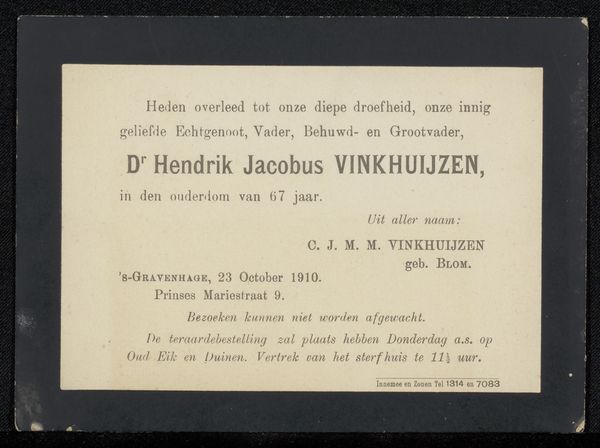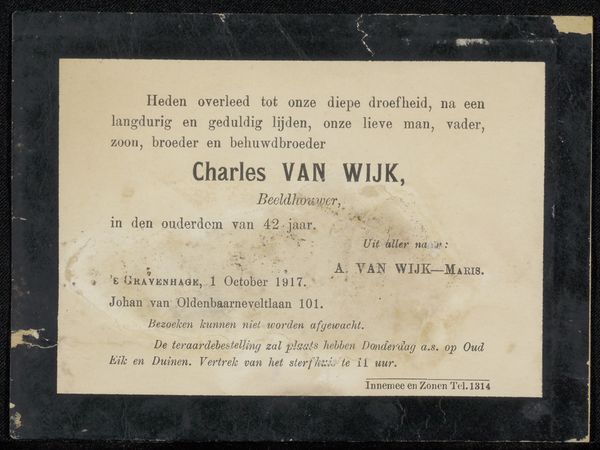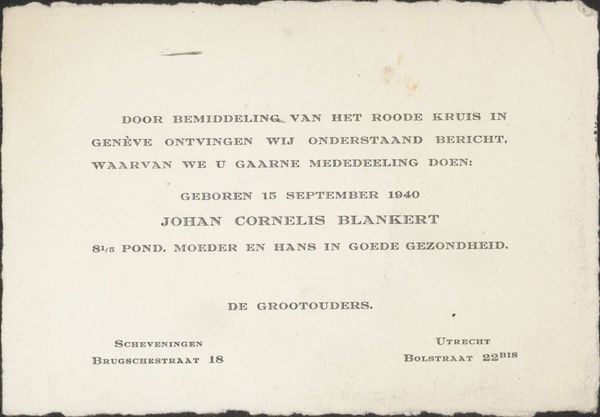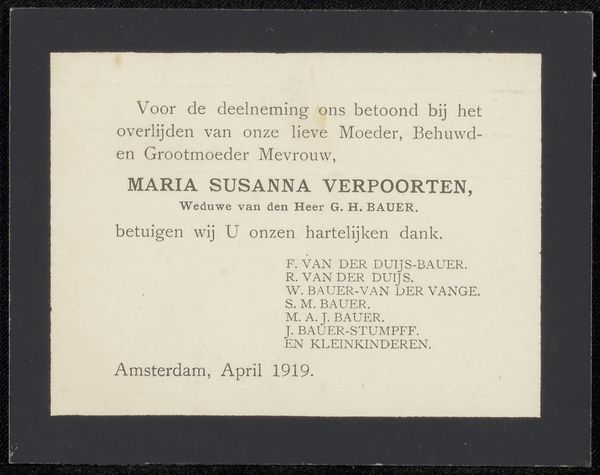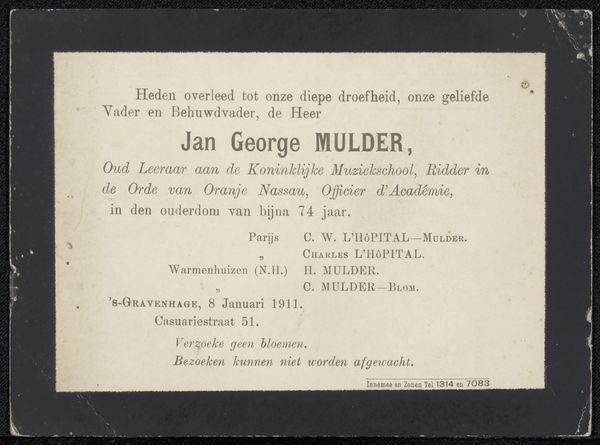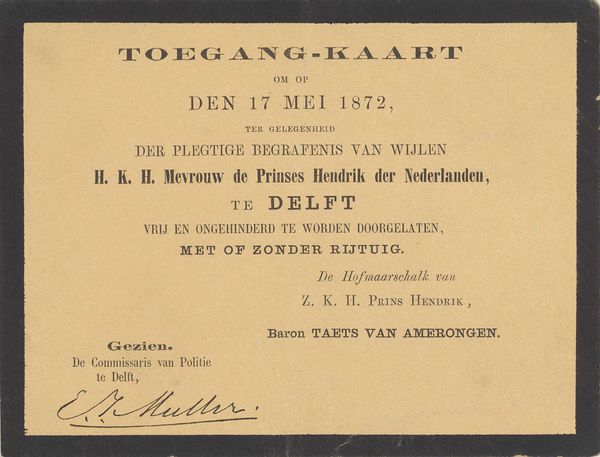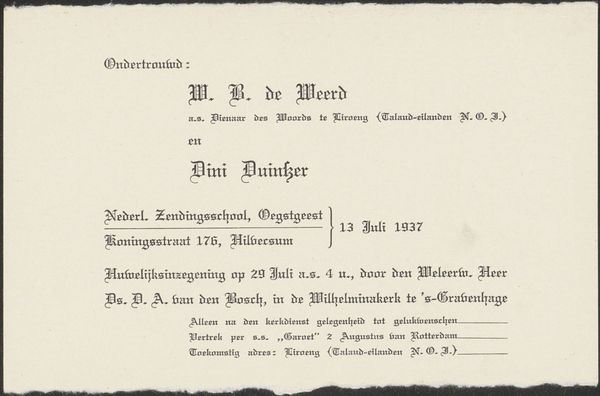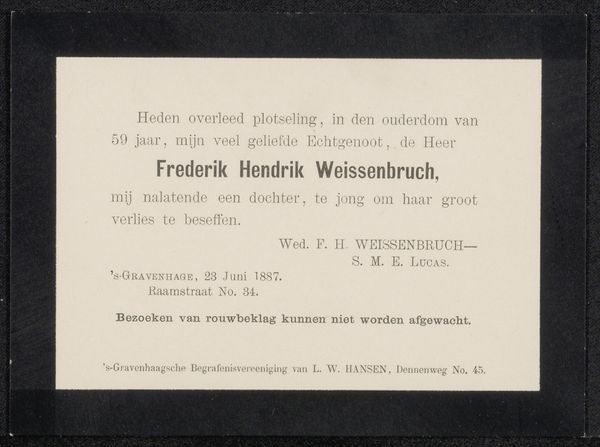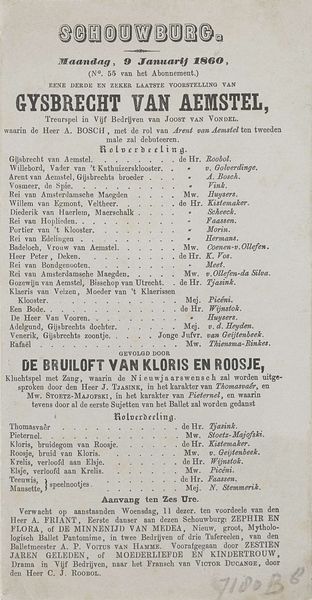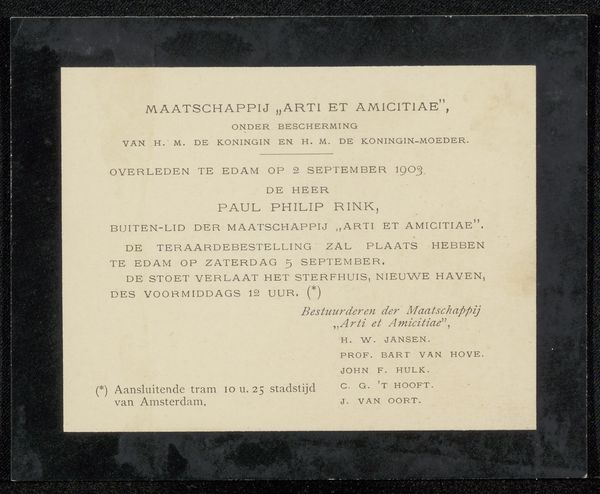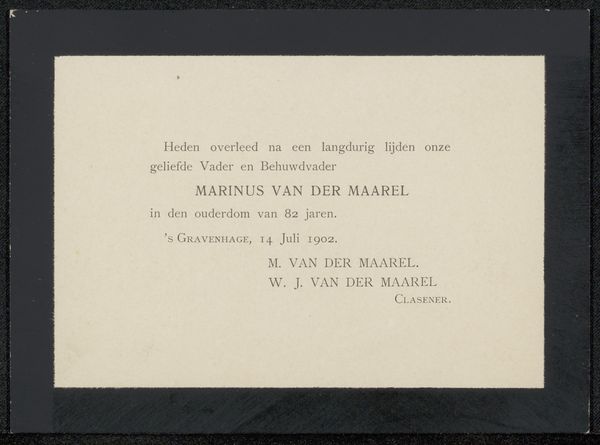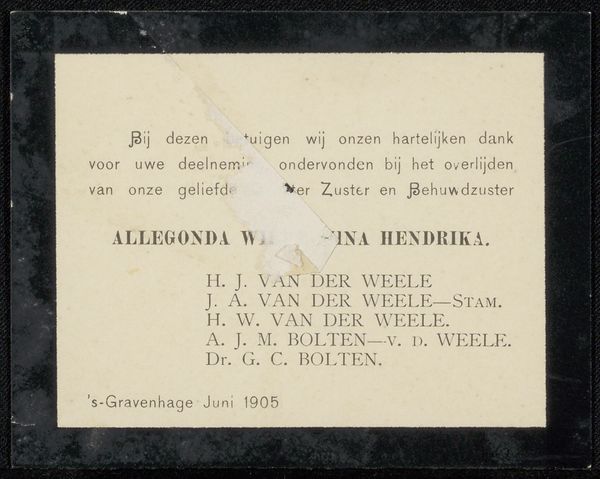
graphic-art, print, textile, paper, typography, poster
#
graphic-art
# print
#
textile
#
paper
#
typography
#
poster
#
calligraphy
Copyright: Rijks Museum: Open Domain
Curator: Here we have an Overlijdensbericht, a death announcement for Willem Maris. Likely created in 1910, this printed poster now resides in the Rijksmuseum's collection. Editor: It strikes me as surprisingly elegant for such a somber piece. The simple paper stock and clean typography, devoid of any embellishment, lends a stark dignity to the announcement. Curator: Agreed. Note the deliberate choice of typography—a formal calligraphy balanced with a straightforward typeface. And its materiality is significant; it’s likely printed in mass for broad distribution. It speaks to the role of printed materials in shaping social rituals. Editor: Precisely. Think of the social dynamics inherent in disseminating such information. The typography dictates a formal, respectful tone and speaks volumes about societal customs and grieving rituals of the era. Also consider the very structure of family, named on this document. Curator: And someone must have designed this. Perhaps a local print shop? The design work here probably reflects local aesthetics and standard printing practices of the day. These posters, or graphic art pieces, can be great examples of craft from that time period. Editor: We also see class subtly expressed. Maris was knighted, which we see on this announcement, marking his family and community position in a society deeply structured around class distinctions and hierarchical rank. Curator: Absolutely, a tangible link to Dutch social history. This isn't just a static image, it's an object involved in the actual practice of mourning and commemoration. Editor: What lingers for me is how this small piece connects to profound emotions—loss, remembrance, familial duty. Curator: Yes, this piece isn't simply announcing a death, it shows how societies have attempted to deal with this phenomenon through process, creation, and distribution of craft and design. Editor: Such objects powerfully remind us how personal grief intersects with broader social and political landscapes. Curator: Agreed. It allows us to appreciate design's presence at all moments, even death.
Comments
No comments
Be the first to comment and join the conversation on the ultimate creative platform.
